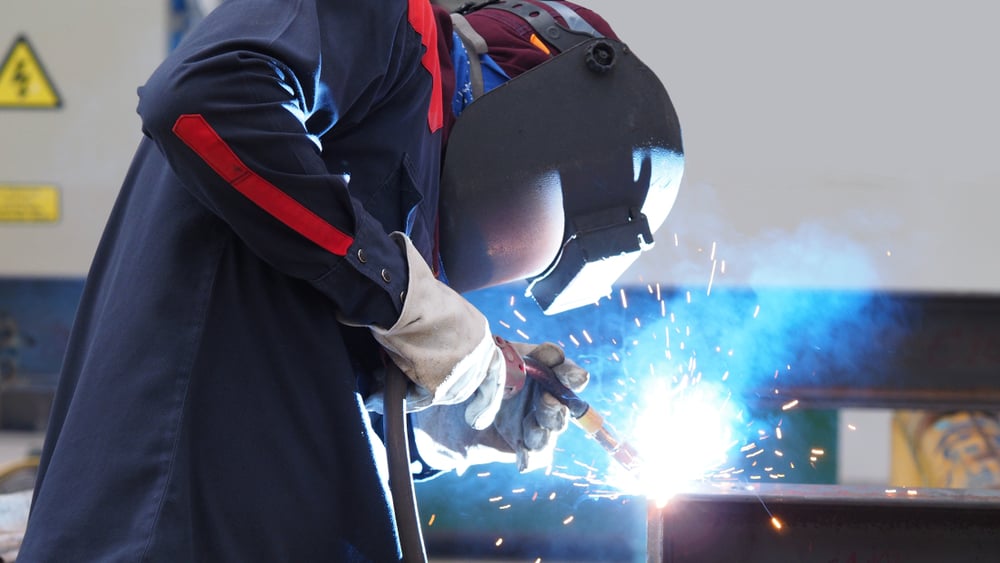Is MIG Welding Easier Than Stick? Find Out Here

It can be tricky choosing the right and strongest welding technique. It doesn’t matter whether you’re a beginner or a professional, it’s always confusing. If you don’t know the differences between each technique by heart, you might get things mixed up and end up choosing the wrong one for your project.
Some professionals like to stick with the old methods, believing that it’s the best, while others claim that MIG is the easiest. It’s not something that you can decide based on what others prefer, you have to decide for yourself. If you don’t take the time to understand the difference, and the pros and cons of each of them, you won’t get a chance to improve your techniques. Here’s everything you need to know.
MIG Welding Advantages and Disadvantages
You first need to know how the MIG welding works. Metal Inert Gas (MIG) welding uses inert gas to operate, which is usually made of argon and carbon dioxide. These welders use consumable electrodes that are generated from a spool.
This process happens through a long cable connected to the machine. The spool feeds the wire with enough current to melt the electrodes and the base metal creating a joint between them. The process is simple and straightforward, which proves that MIG welding can be easier than stick in the operating part. However, MIG welding doesn’t come without disadvantages. If you’re not an indoor welder, the MIG will not assist you with your work as it cannot operate outdoors. A little bit of a breeze can interrupt the shielding gas, which can result in weak welds. Another disadvantage is that this machine doesn’t operate well on metals with rust and paint. You will also need to change the spool when you work on different metals.
On the other hand, MIG welding provides a higher level of precision while welding than other techniques. It is much faster, which means that your productivity will increase, and it’s easy to learn. This means that anyone can learn and use the MIG, even beginners.
Stick Welding Advantages and Disadvantages
If you’ve been welding for a while, then you’re probably familiar with the arc welder. It has been around for many years and it was the most popular method. This machine uses a stick or rod made of metal and covered by flux material that comes in different shapes. Based on the level of strength you’re aiming for, you choose your flux core wire type. The arc welders charge up the stick or rod and create a high-temperature arc.
Unlike other methods, stick welding leaves a slag on the metal after you finish, which forces you to remove the slag by chipping or scraping it before painting. It also requires a lot of rod replacement while working. All of that consumes a lot of time and lowers your productivity. It’s also hard to use stick welding on thin layers of metal as the temperature can get too high, damaging the thin metal.
However, stick welding can be done anywhere, it’s not affected by the wind or any environmental conditions. You can use it with metal that is already painted, without having to remove anything. Also, when you work on different materials, it’s easy to change to the filler material you need.
Which is Right For You

Each method has its own advantages and disadvantages, they have many differences but also many similarities. Both ways come with risks. For example, stick welding produces more fumes and sparks, which can be dangerous while working. However, MIG welding comes with a gas cylinder that you should look after all the time. No method is better than the other and choosing the right one is mainly based on the type of work you do.
When you compare each method, you will find that each machine has its own pros and cons. MIG can be easier to use for beginners but hard to set it up. The stick machine is portable and can be used outside allowing you to move and get work done anywhere you need. However, if you’re using it indoors, you need to have proper ventilation. You can decide which one is more suitable by trying and comparing both machines yourself.

Ravindra Ambegaonkar
Ravindra, the Marketing Manager at NY Engineers, holds an MBA from Staffordshire University and has helped us grow as a leading MEP engineering firm in the USA
Join 15,000+ Fellow Architects and Contractors
Get expert engineering tips straight to your inbox. Subscribe to the NY Engineers Blog below.
